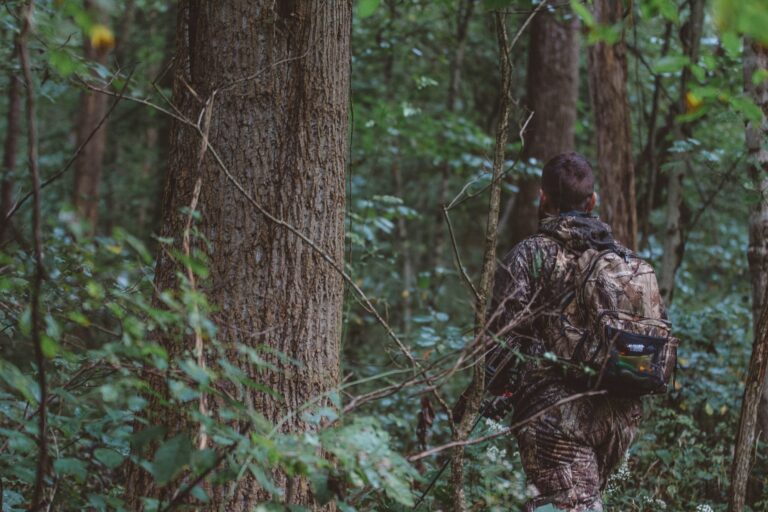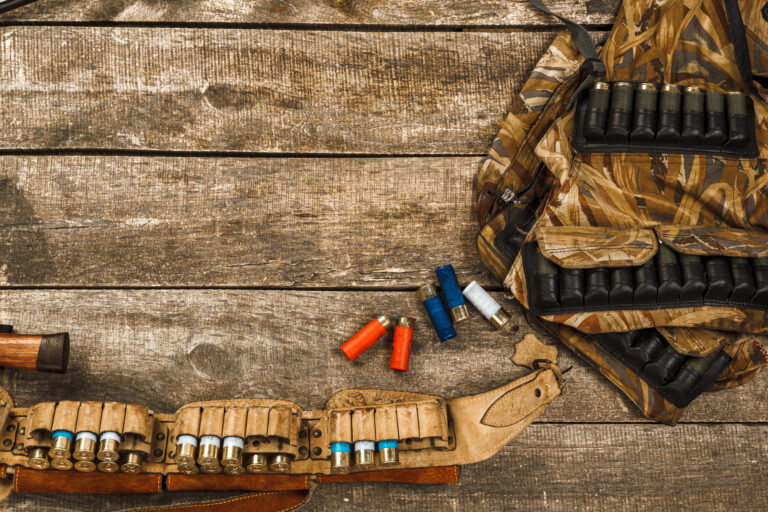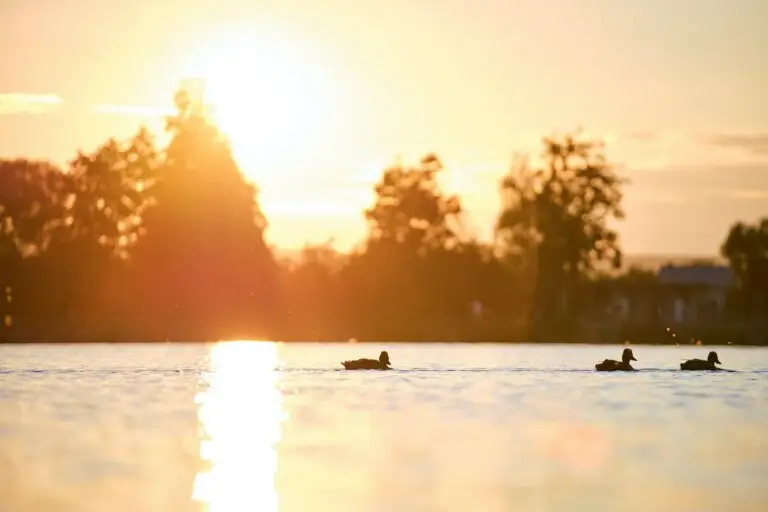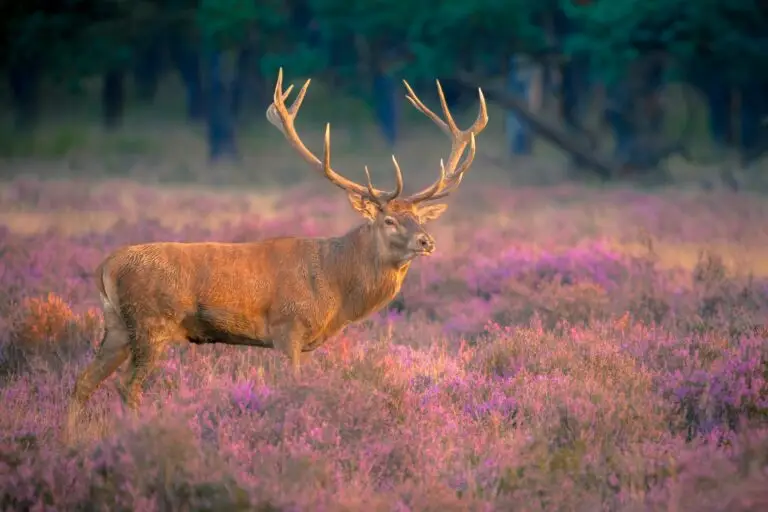Now, I love bird hunting in all its forms. Something about seeing the wings flutter in the air and then slowly calculating the trajectory to get that perfect shot has always scratched an itch in my hunting brain that no other animals could ever get. Nothing scratches this itch better than dove hunting.
Dove hunting is, to me, one of the most thrilling and challenging sports. It is the perfect combination of patience, skill, and true understanding of the game, while still being one of the lower barriers to entry for new hunters who might want to delve deeper into the sport. When it comes to birds, I also find it the most challenging and entertaining because of their behavior.
Table of Contents
From knowing your game to the scouting process, gear priority, and the best techniques to use – there are tons of steps you can follow to increase your chances of a successful and enjoyable dove hunting experience.
In this guide, we’ll take a more in-depth look at each step of the process, hopefully, offer some valuable tips and advice, and prepare you to become the most successful dove hunter you can be. Of course, as with everything else, it will require you to actually go out into the field and do it yourself, and have tons of practice, before you get really good!
But we aim to help you a little a long the way.
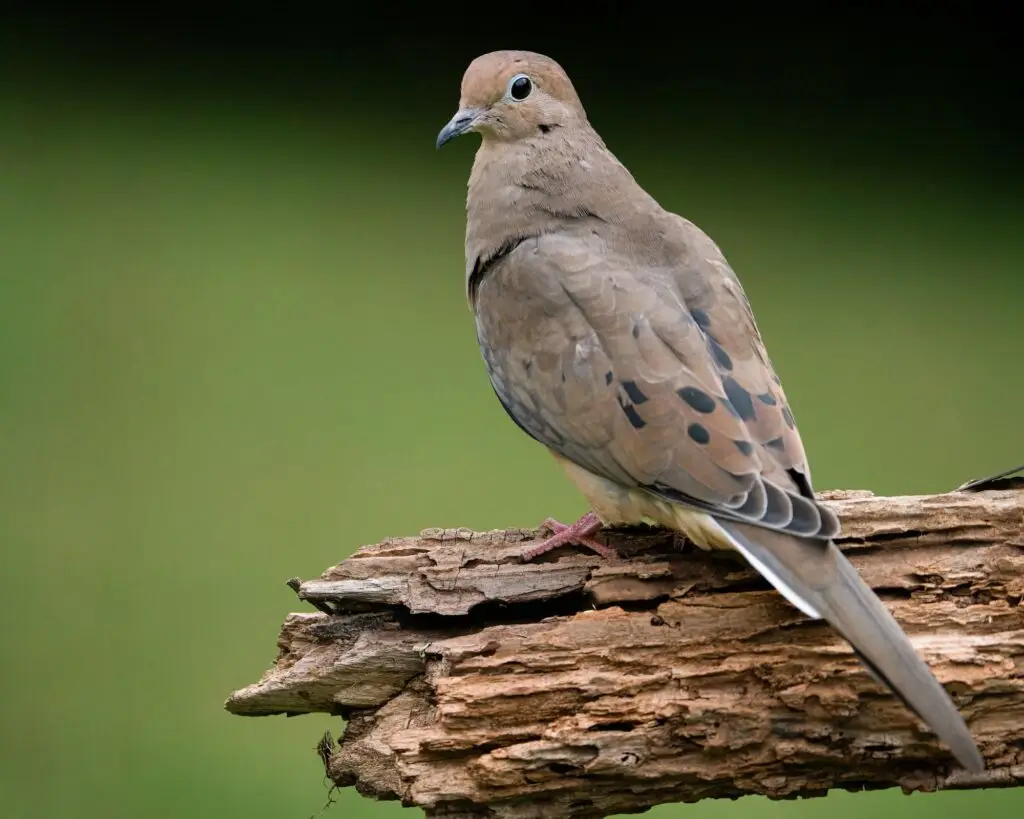
Dove Hunting Tip #1: Know Your Game
One of the most important, as well as underrated skills to have when it comes to dove hunting (or any hunting for that matter), is having a good understanding of the game you’ll be hunting. Not only will it help you identify the birds in the field, but it also helps predict behavior and flight patterns so that you have a higher chance of a clean shot.
Here are some of the things I always consider before I go out dove-hunting:
Species:
There are several types of doves that you may encounter while hunting, including mourning doves, white-winged doves, and Eurasian-collared doves. Each species has its own distinct characteristics and may require different hunting techniques, so it’s important to be able to identify them in the field.
Habitat and Feeding Patterns:
Doves are typically found in open fields, grasslands, and agricultural areas, and can also be found around bodies of water. They feed on a variety of seeds and grains, including sunflower seeds, millet, and corn. Knowing where doves like to feed and rest helps a lot in identifying which areas they’re likely to be found. More on this in tip #3.
Flight Patterns:
Doves are known for their quick, erratic flight patterns, which is why they’re such challenging in-air targets. They typically fly low and fast and you’ll find them darting and changing direction quickly. So take some time to truly understand their flight patterns, so that you can predict where they’ll be headed next. Trust me, this will at least triple your chances of a good shot.
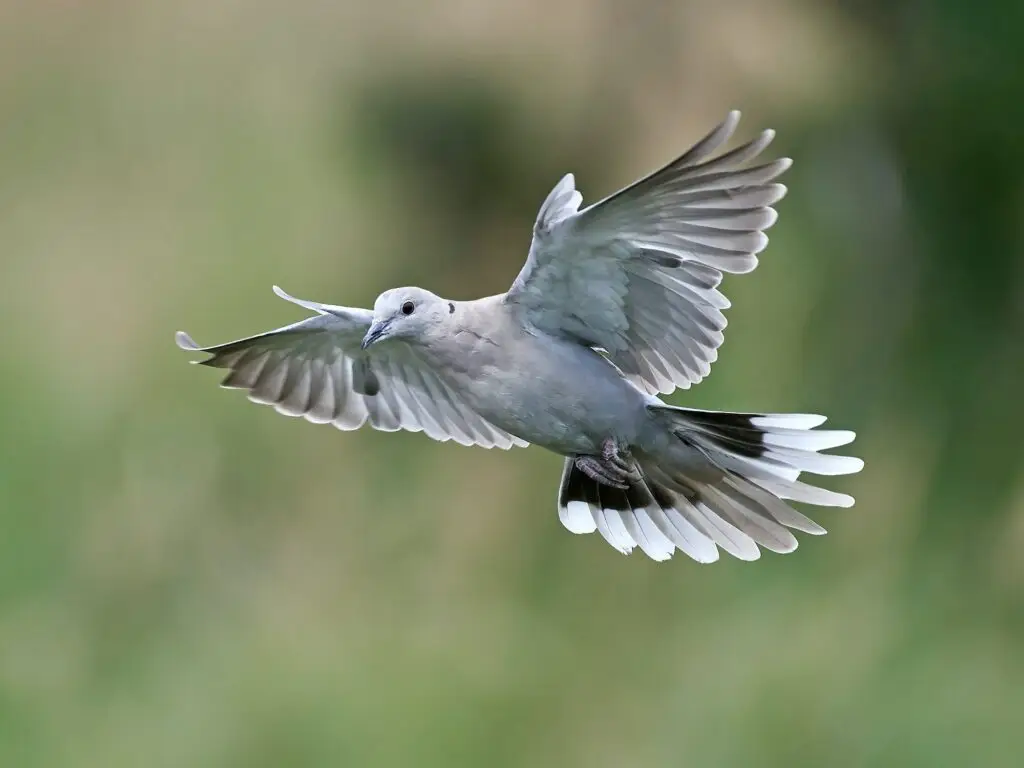
Behavior:
When dove hunting, it is important to recognize that doves are social birds and often travel in flocks. They are most active in the early morning and late afternoon, so try to set out on your hunt during these times. They also have a tendency to return to the same roosting spots each night, so try to identify which areas those are in!
Dove Hunting Tip #2: Get Your Gear
Having the right gear while dove hunting is also crucial. Exactly which brands don’t matter in my opinion, as long it is quality and you like it. Although I’m not gonna tell you which brands to use, I do have some recommendations on where to start on the overall gear selection based on previous dove hunting experiences:
Shotgun
A good quality shotgun is essential for any hunter, and dove hunting is no exception. For dove hunting, a 12 or 20-gauge shotgun with a modified or improved cylinder choke is recommended. These types of shotguns are lightweight, easy to handle, and provide the right amount of power and spread to take down doves.
Check out our guide on how to pick a firearm here, and our guide on which chokes to use for birds like doves here.
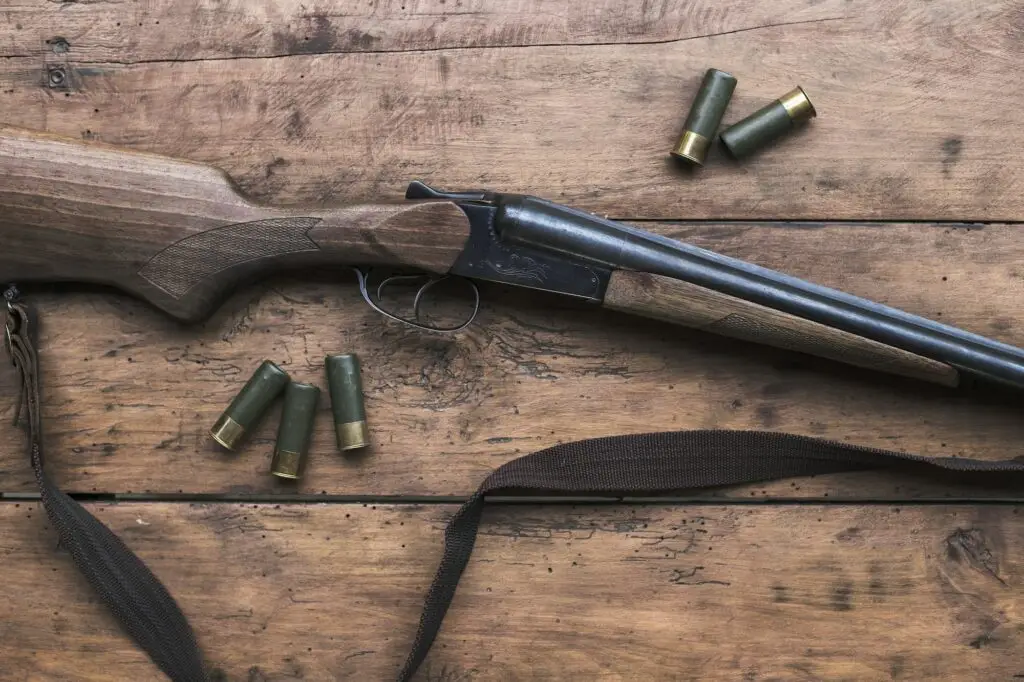
Ammunition:
Using the right ammunition is crucial for successful dove hunting. Smaller shot sizes like #7 1/2 or #8 are perfect for dove hunting, as they provide enough stopping power without destroying the meat.
And, please, for the love of God, check your local regulations regarding ammunition requirements and restrictions. Most states have laws in place to protect against unethical hunting practices, which is a good thing but can sometimes be confusing.
If nothing else, just remember that led = bad. Always.
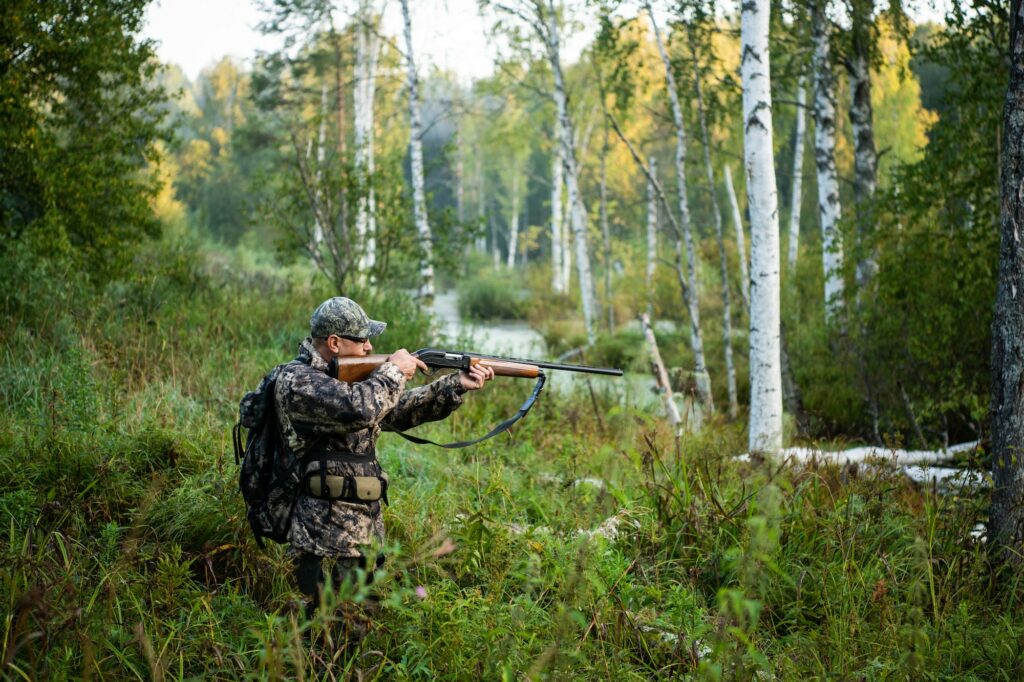
Camouflage Clothing:
Doves have excellent eyesight, so wearing camouflage clothing that matches your surroundings is crucial for blending in and not alerting the birds. Make sure you choose clothing that is comfortable, breathable, and lightweight to keep you cool and comfortable during the hunt.
Decoys:
Using dove decoys can attract birds to your hunting area, making it easier for you to take a shot. There are many different types of decoys available, including stationary decoys, spinning-wing decoys, and even decoys that emit dove calls. They tend to not be too expensive, so I would take the time to experiment with different decoys to find what works best for you!
Dove Hunting Tip #3: Scouting
A branch of the “Know-Your-Game” tree, we need to talk about how to go about properly scouting your game. Having solid information on where the doves you plan to hunt frequently is a critical aspect of the hunt, and will also make the entire activity more fun. Here are some tips based on how I go about scouting:
Find the Right Spot:
I tend to have my most successful dove-hunting trips when I stay near open fields or bodies of water, such as ponds, lakes, or rivers. While in areas like these, look for any trees or other vegetation that can provide cover for the doves.
Take Note of Flight Patterns:
Once you’ve found a promising spot, stay patient and watch the birds for as long as you can muster to get a good sense of their flight patterns and behaviors.
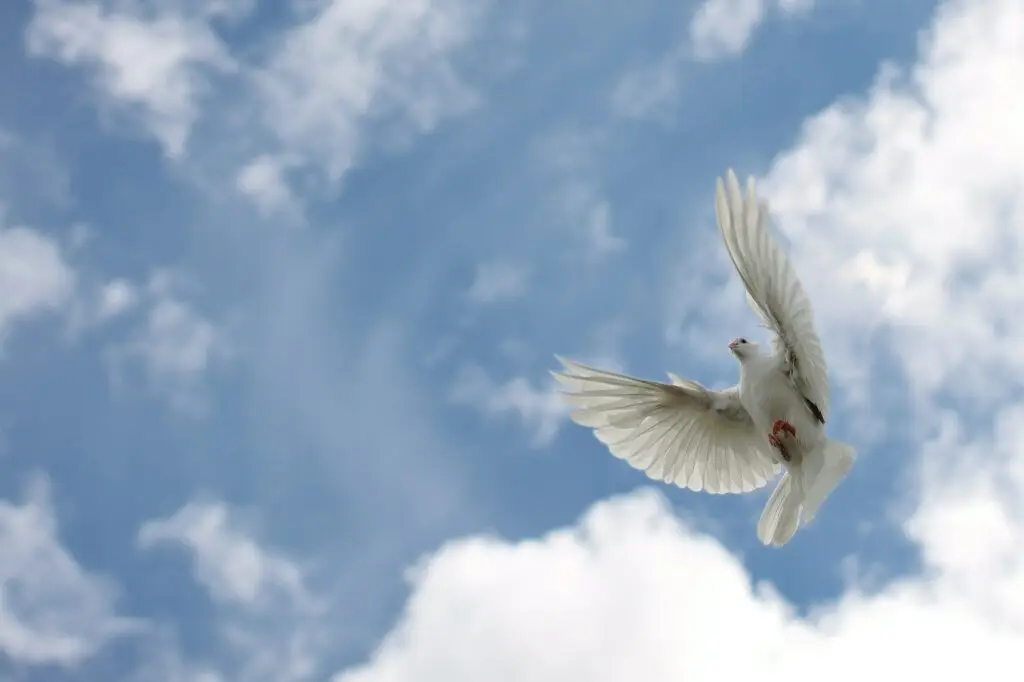
Pay attention to the direction they are flying, the altitude at which they are flying, and how they behave when they approach or leave the area. Then, long before you start taking aim, try to predict a few of the bird’s movements by whispering them out loud. When I start consistently predicting their patterns fairly well, I get ready for the shot.
Look for the Signs
Look for signs of doves, such as droppings, feathers, or nests. If you see other hunters in the area, ask them about the dove population and where they have been successful in the past.
Remember, scouting takes time and patience. Spend some time observing the birds and their behavior to get a better sense of where and when to set up your hunting spot.
Although I haven’t personally used them, I also know there are a bunch of apps and websites that can help you scout for doves in specific areas – definitely something that can be worth checking out!
Dove Hunting Tip #4: Hunting Techniques
Alrighty, you’ve found a promising spot, scouted the areas and you’re seeing doves in droves. Now what? Well, there are three main ways you can hunt the little beauties:
Stationary Hunting:
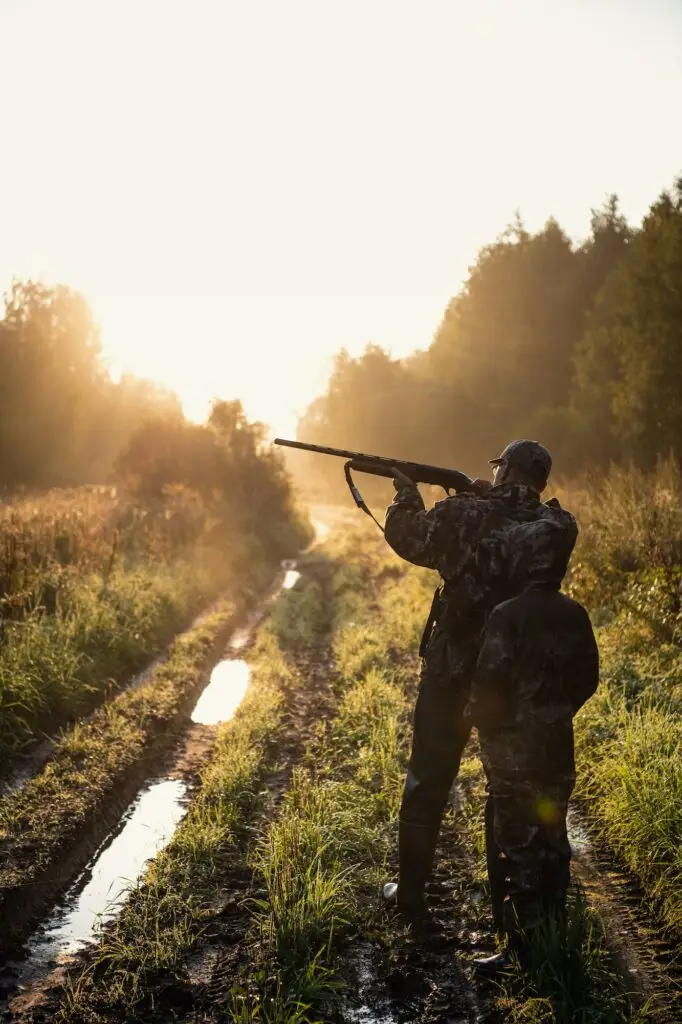
Stationary hunting is the most common technique used in dove hunting. This method involves finding a good spot to set up, such as near a watering hole or open field, and waiting for the doves to fly overhead. Once you’ve spotted your prey, aim and shoot. It’s essential to remain still and quiet as you wait for the birds to come into range.
Pass Shooting:
Pass shooting involves positioning yourself along a flight path that doves are known to travel, such as along a fence line or between trees. As the birds fly overhead, you’ll need to aim and shoot quickly. This technique requires a bit more skill and experience than stationary hunting, as you need to anticipate the birds’ movements and adjust your aim accordingly.
Jump Shooting:
Jump shooting involves walking or stalking through an area where doves are known to be, such as a field or along a treeline. Once you’ve startled the birds, you’ll need to quickly aim and shoot. This technique requires the most physical exertion and patience, as you’ll need to walk or stalk through the area quietly and slowly without spooking the birds.
Dove Hunting Tip #5: Safety First
I know I know, this one probably speaks for itself. But as someone who has seen too many accidents in my short lifetime, I want to take a couple of paragraphs to skim over the importance of safety when out in the field – especially when hunting quick and sporadic animals like doves (that can sometimes get the temper up as well).
Always keep your shotgun pointed in a safe direction:
This is one of the most important safety rules in hunting. Never point your shotgun at anything you don’t intend to shoot, and always keep it pointed in a safe direction.
Only shoot at birds when you have a clear and safe shot:
Please. Take the time to identify your target and make sure you have a clear shot before taking aim. Never shoot at a bird that’s too far away or when there’s a risk of hitting someone or something else. You also don’t want to cause the bird any unnecessary distress by crippling it and having it die on its own, far away from your sauce pan.

Make sure you’re aware of other hunters in the area:
Always be aware of your surroundings and other hunters in the area. Avoid shooting in the direction of other hunters, and make sure you’re visible to others at all times.
Wear ear and eye protection:
I wasn’t very smart in my younger hunting years and permanently lost a big chunk of my hearing.
Be sure to check local regulations for safety requirements:
Different states and regions may have different safety requirements for hunting, so it’s essential to check local regulations before heading out. This may include wearing blaze orange clothing, using a specific type of ammunition, or following specific hunting hours etc. so do your research!
Enjoy The Beauty of Dove Hunting!
Dove hunting is just so much fun, and I cannot recommend it enough if you haven’t had a chance to try it yet. In addition to being a delicious animal to eat afterward, it’s also one of the more fun and satisfying birds to go after because of their flight patterns and behaviors.
Now that you hopefully know a little bit more about the game and sport, I wish you all the best on your future hunting trips. Remember, that with all things nature, respecting the beauty of our wildlife and earth is the most important part.
You don’t just shoot doves because of killing, but as a way to connect and commune with nature. Our primal instinct, and to help the conservation of our beautiful nature.
When hunting, always take your time to enjoy the scenery. Take deep breaths of the fresh air. Be happy to have the opportunities we do as hunters to be a part of nature in a way most other will never have the chance to.
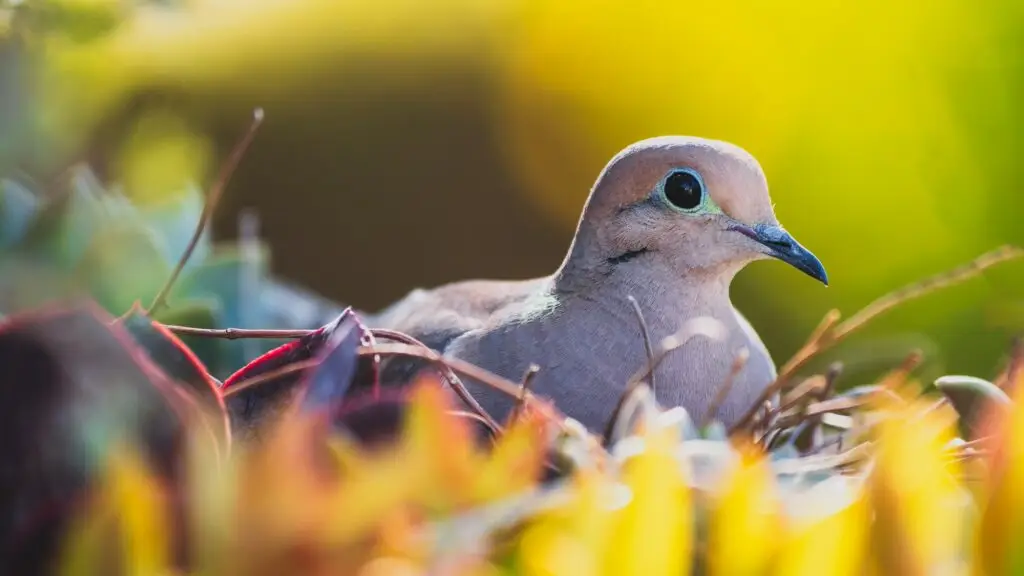
We hope this guide has provided you with valuable insights and tips to enhance your dove hunting experience. Now it’s time to grab your gear, hit the fields, and make some unforgettable memories!
Happy Hunting!
Looking for other general tips and tricks? Check out our library of hunting guides here!


